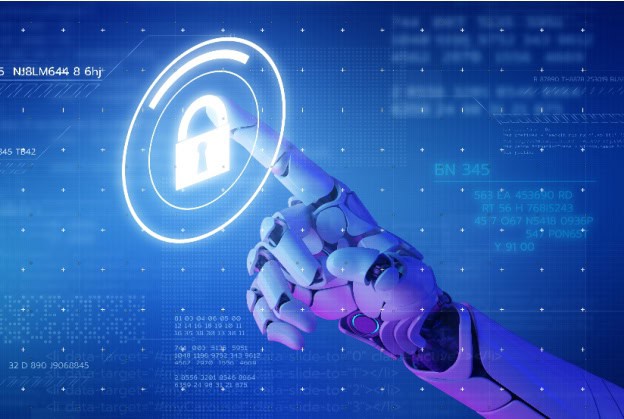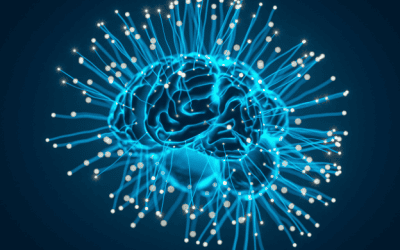Cyber hackers continue to develop more sophisticated methods, targeting vulnerabilities across networks, applications, and devices. For organizations, the challenge lies in staying ahead of these rapidly advancing threats. Artificial Intelligence (AI) offers a game-changing solution, enabling companies to proactively predict, detect, and respond to cyberattacks. By analyzing vast amounts of data and identifying patterns, AI allows businesses to anticipate risks and strengthen their cybersecurity defenses like never before.
AI, particularly when integrated with cybersecurity systems, provides businesses with a powerful tool to proactively defend against emerging threats. By leveraging vast amounts of data and advanced algorithms, AI can detect patterns and anomalies that may signal potential cyberattacks. In this blog, we’ll explore how businesses can harness AI to predict and mitigate cyber threats, reducing their risk exposure and strengthening their cybersecurity posture.
1. Understanding AI in Cybersecurity
Artificial Intelligence involves the use of machine learning (ML), deep learning, and natural language processing (NLP) to analyze massive datasets. When applied to cybersecurity, AI has the ability to sift through logs, network traffic, and endpoint data at speeds far beyond human capabilities. The key advantage of AI in cybersecurity is its ability to identify patterns that might indicate malicious activity, even before the actual attack happens.
Through continuous learning and adaptation, AI models evolve and become more effective at detecting new types of threats that haven’t yet been cataloged. This proactive approach is critical, as cybercriminals often deploy innovative techniques to bypass traditional security measures.
2. How AI Predicts Cyber Threats
AI-powered cybersecurity solutions focus on predicting threats based on historical data, behavior analysis, and real-time monitoring. Here are some ways AI predicts potential cyber threats:
- Anomaly Detection: AI algorithms can detect unusual activity within a network by identifying patterns that deviate from the norm. For example, if an employee’s login behavior suddenly changes (such as accessing the system from a new location or downloading large amounts of data), AI can flag this as a potential threat.
- Threat Intelligence Analysis: AI can analyze threat intelligence data across multiple sources, scanning for new malware, phishing attempts, or ransomware patterns. With this information, businesses can predict potential attack vectors and prepare their defenses.
- Predictive Analytics: By processing historical data from past attacks, AI systems can predict future vulnerabilities and determine which systems are at the highest risk of exploitation. This allows businesses to prioritize their security efforts and patch vulnerable systems before they’re targeted.
- Behavioral Profiling: AI can create behavioral profiles for users, devices, and applications. If a user starts performing actions that are out of character, the system can automatically trigger alerts, or in some cases, take preventative action by blocking access.
3. Real-Time Monitoring and Automated Response
Traditional security systems are often reactive, responding only after a breach has occurred. AI changes this dynamic by enabling real-time monitoring of networks and endpoints. With the help of AI, businesses can monitor their entire IT infrastructure 24/7, detecting suspicious activities as they happen and reacting in real-time to contain threats.
AI-driven automated response systems can even take action without human intervention, such as isolating infected devices, shutting down suspicious processes, or blocking malicious IP addresses. This rapid response helps minimize the damage caused by an attack and gives security teams time to analyze the situation and take further action.
4. Using AI to Enhance Threat Hunting
Threat hunting, the proactive search for cyber threats within a network, has traditionally been a labor-intensive process requiring expert knowledge. AI simplifies this by automating the scanning and analysis of vast amounts of data, identifying potential threats that may be lurking within the system.
AI’s ability to quickly process large volumes of data allows cybersecurity teams to focus on higher-level tasks rather than spending time on manual threat identification. Furthermore, AI-based threat hunting tools can generate insights from diverse sources, including dark web monitoring, open-source intelligence, and proprietary threat databases.
5. AI’s Role in Enhancing Human Decision-Making
While AI is incredibly powerful, it doesn’t replace human intelligence—at least not yet. Instead, AI enhances the decision-making capabilities of cybersecurity professionals. By providing them with deeper insights, AI helps security teams make faster, more informed decisions about how to handle potential threats.
AI tools, like AgileBlue’s Sapphire AI, include features such as an AI SOC assistant, AI case summarizer, and AI-driven response capabilities that can streamline the investigation process. These tools empower security teams by giving them a clear picture of threats, helping them prioritize responses, and enabling quicker resolution.
6. The Future of AI in Cybersecurity
The future of AI in cybersecurity is promising. As cyber threats continue to evolve, so too will AI’s ability to predict, detect, and mitigate these threats. In the coming years, we can expect to see more businesses integrating AI-based systems into their cybersecurity strategies.
Advancements in AI, such as federated learning (which allows AI models to learn from decentralized data sources) and more sophisticated adversarial machine learning, will further refine its ability to predict and prevent threats before they manifest.
The rise of AI in cybersecurity marks a significant step forward in the fight against cybercrime. By leveraging AI’s predictive capabilities, businesses can stay one step ahead of attackers, identifying threats before they strike and responding more effectively to those that do. As AI continues to advance, its integration into cybersecurity strategies will be crucial for businesses looking to protect their digital assets and maintain trust with customers.
For businesses, investing in AI-driven cybersecurity is no longer a luxury—it’s a necessity. As threats grow in complexity, AI provides the speed, accuracy, and foresight needed to safeguard operations and prevent costly breaches.




